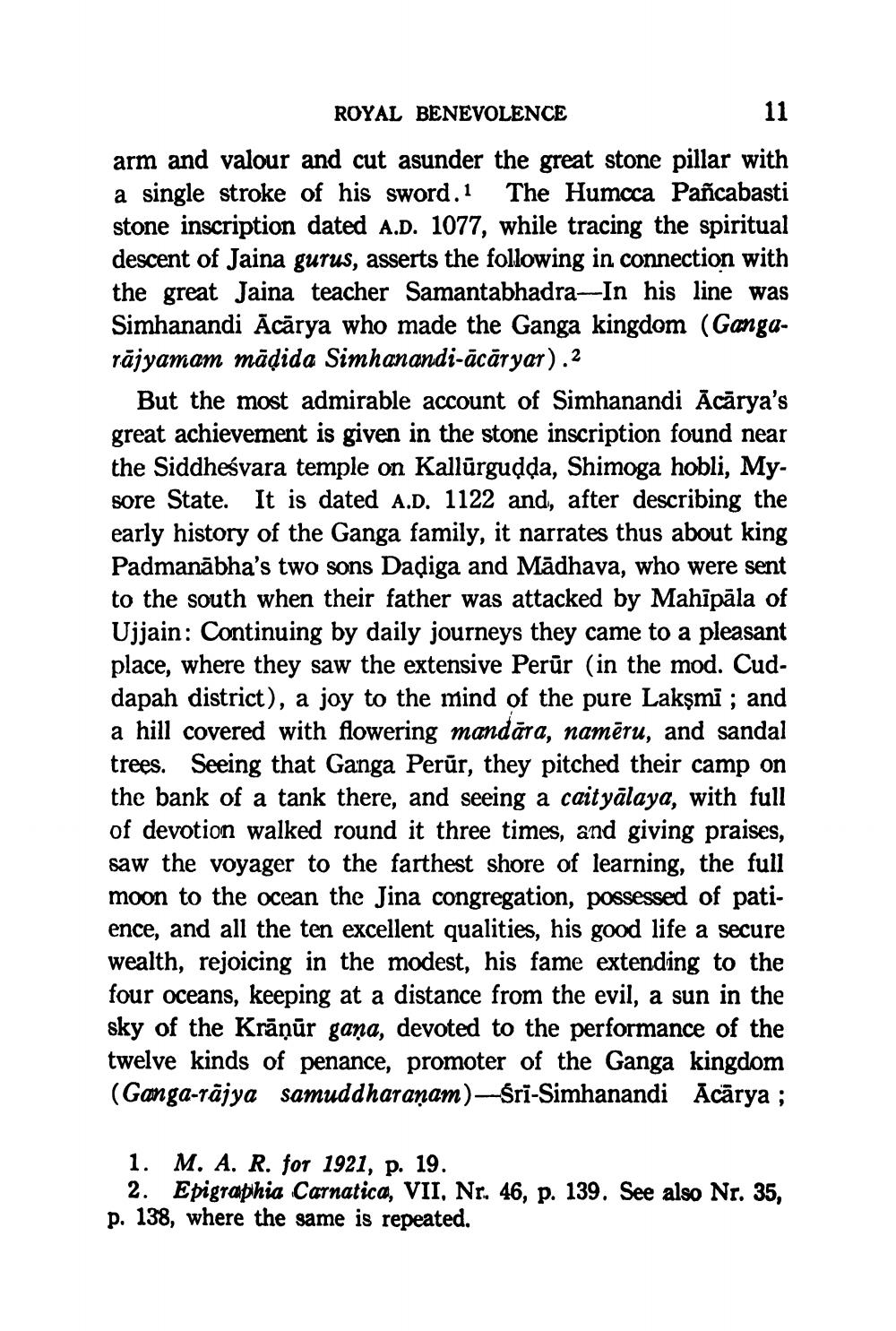________________
ROYAL BENEVOLENCE
11
arm and valour and cut asunder the great stone pillar with a single stroke of his sword.1 The Humcca Pañcabasti stone inscription dated A.D. 1077, while tracing the spiritual descent of Jaina gurus, asserts the following in connection with the great Jaina teacher Samantabhadra-In his line was Simhanandi Ācārya who made the Ganga kingdom (Gangarājyamam mādida Simhanandi-ācāryar). 2
But the most admirable account of Simhanandi Ācārya's great achievement is given in the stone inscription found near the Siddheśvara temple on Kallūrgudda, Shimoga hobli, Mysore State. It is dated A.D. 1122 and, after describing the early history of the Ganga family, it narrates thus about king Padmanābha's two sons Dadiga and Madhava, who were sent to the south when their father was attacked by Mahipāla of Ujjain: Continuing by daily journeys they came to a pleasant place, where they saw the extensive Perur (in the mod. Cuddapah district), a joy to the mind of the pure Lakşmi ; and a hill covered with flowering mandāra, namēru, and sandal trees. Seeing that Ganga Perūr, they pitched their camp on the bank of a tank there, and seeing a caityālaya, with full of devotion walked round it three times, and giving praises, saw the voyager to the farthest shore of learning, the full moon to the ocean the Jina congregation, possessed of patience, and all the ten excellent qualities, his good life a secure wealth, rejoicing in the modest, his fame extending to the four oceans, keeping at a distance from the evil, a sun in the sky of the Krāņūr gana, devoted to the performance of the twelve kinds of penance, promoter of the Ganga kingdom (Ganga-rajya samuddharanam)-Śri-Simhanandi Acārya ;
1. M. A. R. for 1921, p. 19.
2. Epigraphia Carnatica, VII, Nr. 46, p. 139. See also Nr. 35, p. 138, where the same is repeated.




